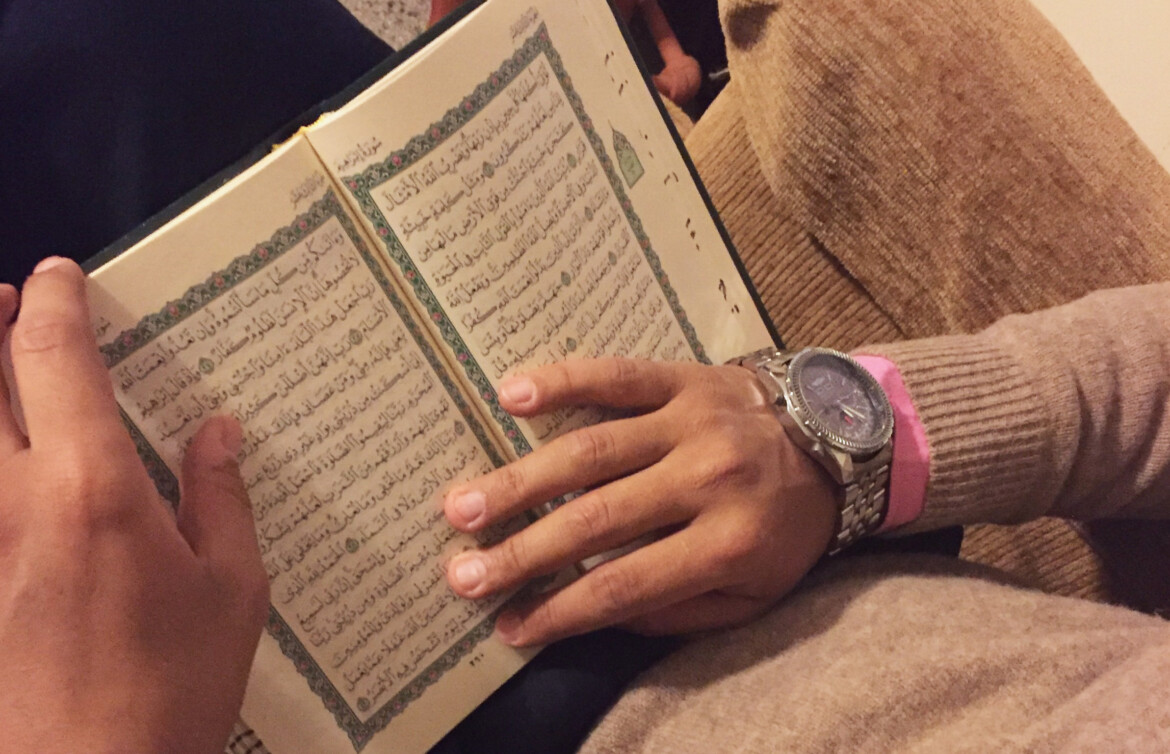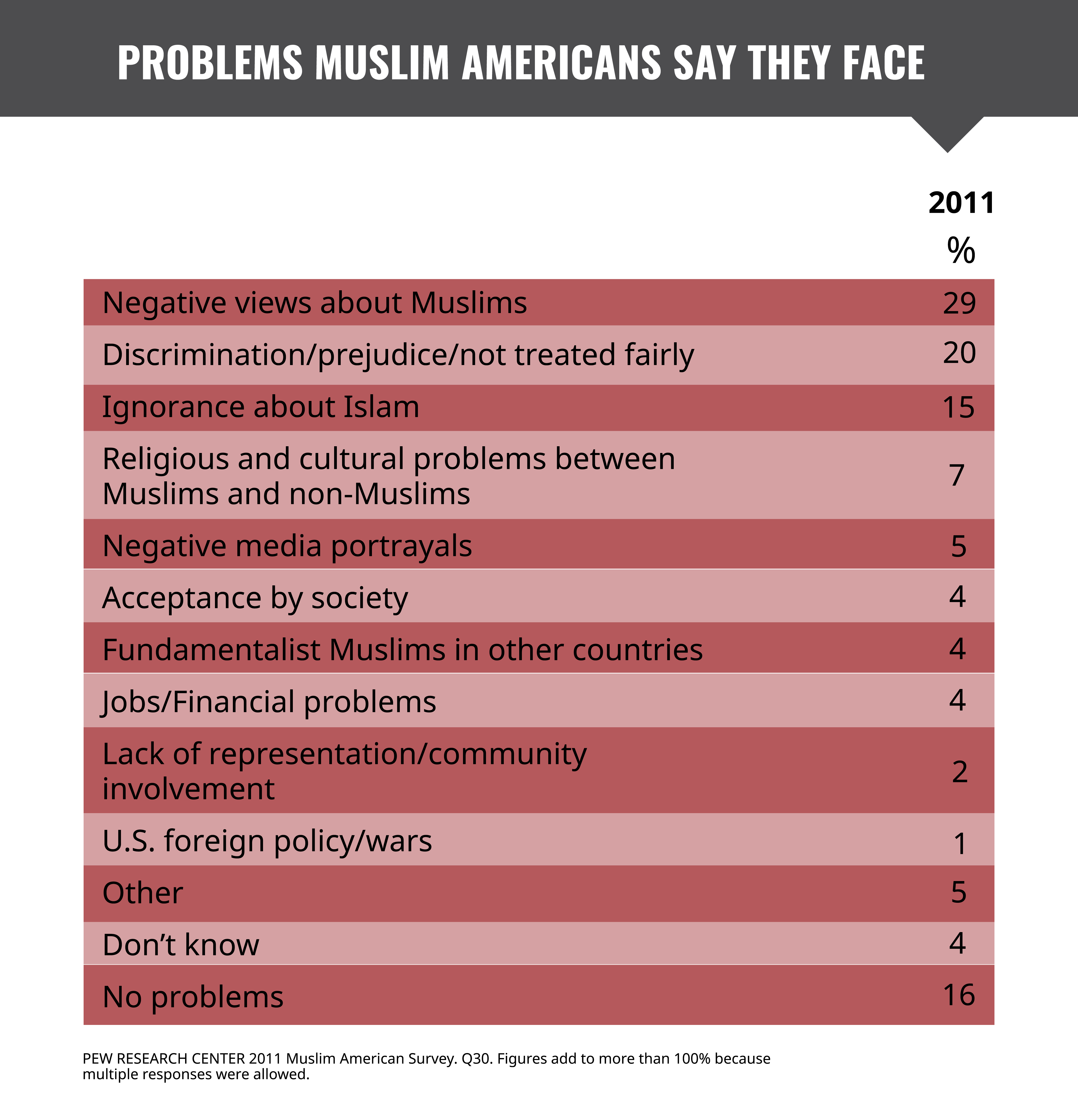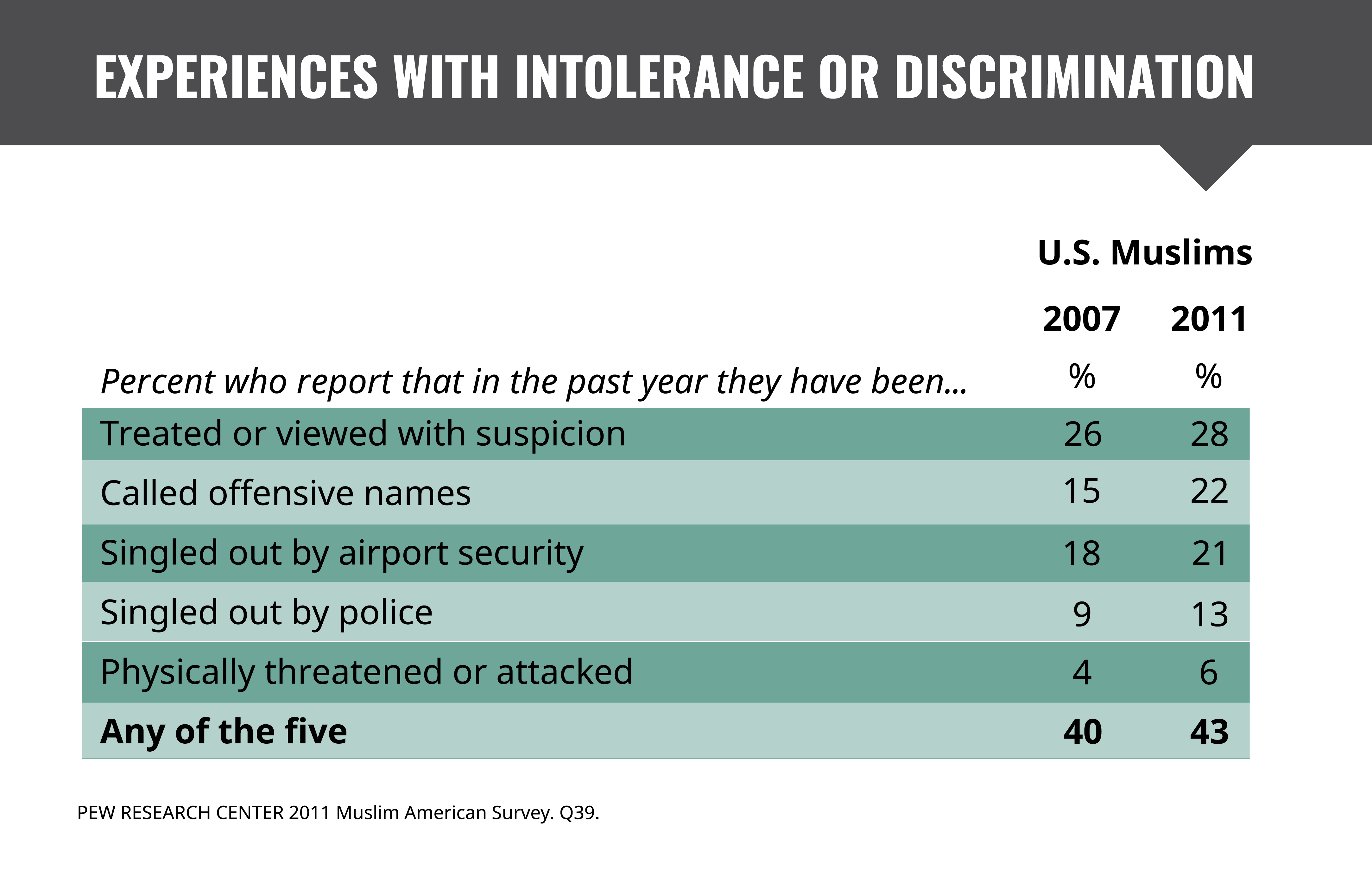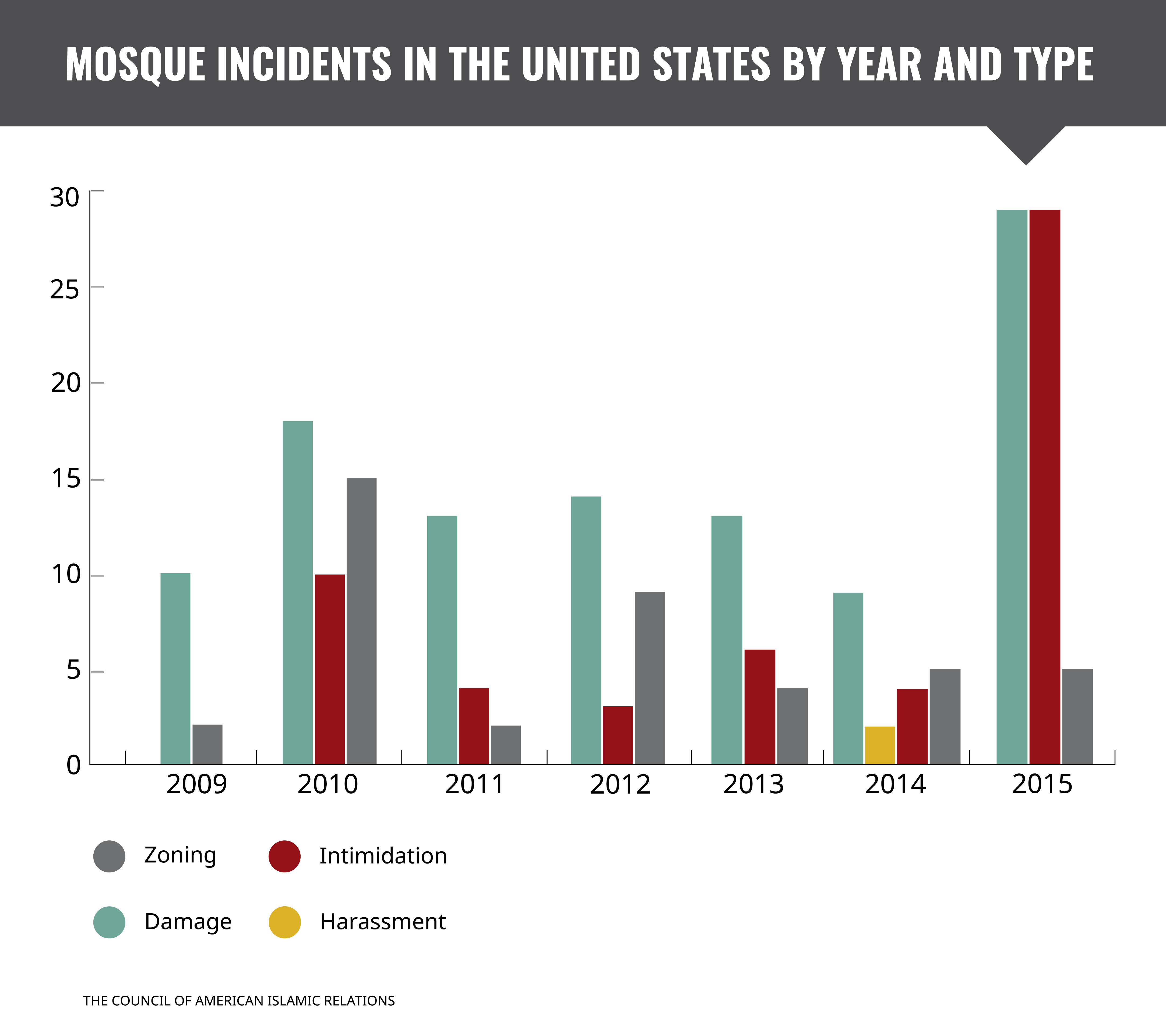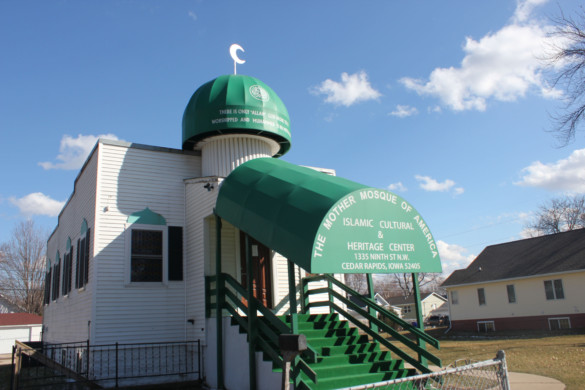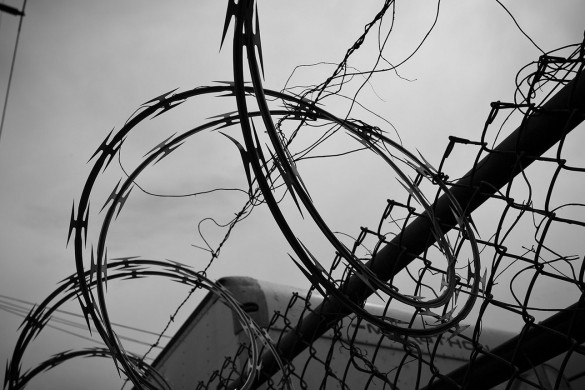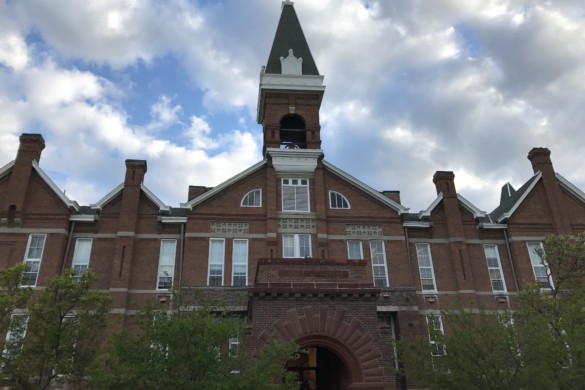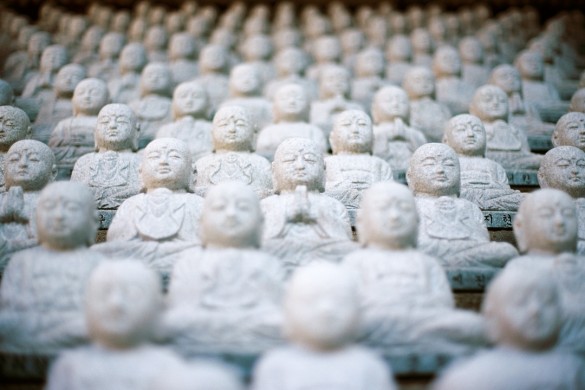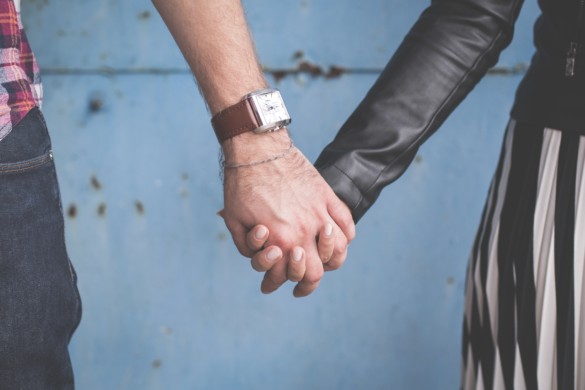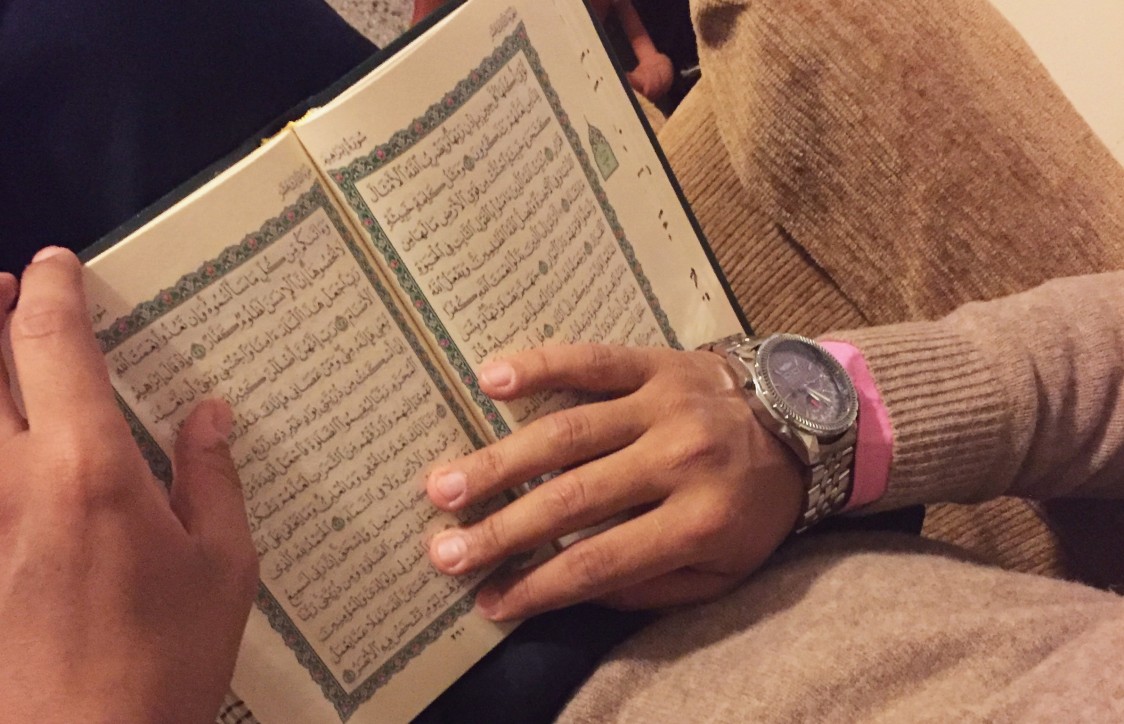
As anti-Muslim crimes proliferate across the Midwest, advocacy groups are trying to educate Americans about Islam and promote religious understanding
Words by Sarah Fulton
Video and photo by Emma Wilson
Nadia Ali walks down the street in Des Moines, Iowa. She’s casually playing on her phone. Suddenly, a man yells “Go home!” from a passing car. Her mother, a few steps ahead, turns to look, confused. She asks Ali if the man yelled at her. He did. All because Ali wore her hijab as she walked to her mosque.
“They look at you like you’re an outsider; you’re a foreigner,” Ali says. “They don’t look at you as you are a member of the community. You’re a Muslim.”
Her experience isn’t an uncommon one for Muslims in the Midwest—and for Muslims nationwide. They often face suspicion and resentment—and occasionally outright violence.
Todd Green, an associate professor of religion at Luther College in Decorah, Iowa, wrote about the roots of Islamophobia in his book, “The Fear of Islam: An Introduction to Islamophobia in the West.” He says that anti-Muslim attacks rose considerably beginning in 2015, spurred on by the heated rhetoric in the presidential campaign, and the violent attacks in Paris and San Bernardino, California.
“Islamophobia is worse now than ever. I won’t say that we’re at the peak because I don’t know that it isn’t going to get any worse,” Green says. “It has never been as bad as it is right now, period.”
Hibaq Salim, a drug and alcohol counselor in Des Moines, saw this hate targeted at her 10-year-old sister. As the girl walked home from school, a man yelled out his apartment window, “Go home, towel head!” Salim was shocked.
“You’re associating me with something I’m not or something I didn’t do,” Salim says. “It kind of makes you feel like a black sheep, I guess.”
The Problem
A Pew Research study found 55 percent of Americans claim to know very little or nothing about Islam. In his book, Green details how 19th- and 20th-century U.S. imperialism, ignorance of Islam and a lack of relationships with Muslims has created this climate. Green says today’s American public has “inherited a prejudice” against Islam from previous generations.
“We still continue to think of Muslims around the world as people who need our power and need our control, and we need to dominate,” Green says. “Then the Muslims at home become stand-ins or symbols for those Muslims abroad, including Muslims that respond in more extremist ways like ISIS or Al Qaeda.”
What this prejudice looks like in the Midwest varies widely. It can look like Cincinnati, Ohio, where, on November 16, 2015, a man tried to run over Haneen Jasim, a University of Cincinnati student, with his car while repeatedly calling her a terrorist. Or it can look like Cedar Rapids, Iowa, where a Muslim man’s house was vandalized with the message: “You will die here.” And it can look like Grand Forks, North Dakota, where a Somali restaurant in was set on fire days a few days after a Nazi symbol was painted on the door.
Regardless of how it looks, though, signs point to such prejudice getting worse in the Midwest and across the country.
“Historically, it’s been not too bad until just recently,” says Miriam Amer, Iowa executive director of the Council of American-Islamic Relations (CAIR). “There’s been some attacks on mosques and Muslims, but it’s growing. With all of the presidential election rhetoric and certain people out there saying things against Muslims, it’s grown quite bad here.”
CAIR reported 66 incidents of vandalism, intimidation and harassment targeted at mosques in the U.S. in 2015. Between 2009 and 2014 there was an average of 20 to 21 incidents per year.
Changing the Dialogue
The good news: As the number of incidents has risen, so has the number of people working to combat it. Advocacy groups are sprouting up across the Midwest to educate non-Muslims about the faith. Amer travels frequently on behalf of CAIR, giving speeches and attempting to build coalitions supportive of Muslim-Americans.
“You have that little pocket of bigots out there. But for every bad person, there are a hundred good,” Amer says. “The population of the Midwest is becoming more aware of the hate that is being directed toward us, and a lot of them are standing up and saying, ‘No, we are not going to let that happen.’”
The Interfaith Youth Core (IFYC), based in Chicago, works with 400 colleges and universities across the country to create inter-faith tolerance and understanding. It trains student leaders to provide information about Islam and prevent bigotry, often after an incident on a school campus.
“Oftentimes people reach out to us when something has happened, and there’s a great deal of hurt and confusion and fear on the campus,” says Becca Hartman, stewardship manager for the IFYC. “We support people who are trying to respond to that. Often times it’s a public thing, like a vigil. Sometimes it’s a much more targeted activity, like training for [resident assistants].”
Hartman says college students are eager to learn about Islam. “They often feel sheepish. They don’t want to say the wrong thing,” she says. “A lot of our leadership training is creating a space where people feel comfortable to admit where they need a lot of growth and to provide a space where people can ask honest questions and build real relationships.”
That’s the goal of a Des Moines group formed through the American Friends Service Committee (AFSC), a Quaker organization, as well. They want to build relationships between local Muslims and non-Muslims. The group hopes to have a day when all seven mosques in the metro area host an open house for the rest of the community. Such advocacy groups strive to put a face to Islam and counteract negative portrayals of Muslims in the media.
“If people have known you personally and they have seen you grow up, they don’t really associate you with the image of Islam they have now,” Salim says. “It’s creating those relationships so that people have this rapport, this relationship in the community. They don’t associate the Muslim that’s in front of them with the Muslims on TV or that they’re taught to fear.”
Everyone will take the information that fits his beliefs and ignore any other information on the Internet.”
-Esam Boraey
Creating those same kinds of relationships online is much more difficult, especially considering the amount of misinformation about Islam on the web. Esam Boraey, who founded the Des Moines AFSC committee, attempts to counter misleading information about Islam on the Internet. It’s not easy. “No one can control what is on the Internet,” he says. “Everyone will take the information that fits his beliefs and ignore any other information on the Internet.”
And there are plenty of misconceptions about Islam, including conflating the Muslim religion with geography and assuming all Muslims are alike, Boraey says. His first step to ending Islamaphobia: simply provide knowledge. From there he hopes stereotypes and hate will break down.
“People believe that all Muslims are exactly the same,” Boraey says. “This is not true. We are 1.3 billion people. On a scale from one to 10, we have Muslims from one till 100. We are so different.”
Ali, a member of Boraey’s advocacy group, says her goal is to create a community where everyone is welcome—a community where a woman is not feared just because she wears a hijab.
“I want the non-Muslim community to not be afraid to talk to Muslims. Or, if they are ignorant of some issues, this can be where they start to learn things, ask questions, not be afraid,” Ali says. “I think starting a dialogue between Muslims and non-Muslims will help them to come together, to work together, to be allies to each other, to have each other’s backs.”

